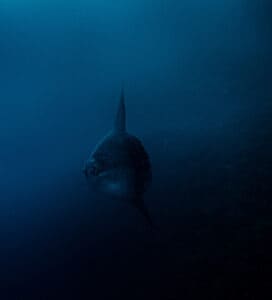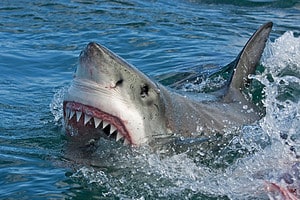The ocean’s wonders never cease to amaze us, and as the years go on, more and more fish are being discovered. We have found a staggering 100+ fish with names starting with just the letter “L”! We aim to get through the alphabet to discover how many amazing fish there are from A-Z.
As animal lovers, we love researching animals’ names, weights, food preferences, habitats, and population status. However, fish is the one animal whose population status is mysteriously marked as “population unknown.” And this is because we do not have a solid understanding of how many fish there are in the world.
Through thorough research, scientists and marine biologists have made an educated guess that there are some 3.5 trillion fish worldwide. With approximately 33,000 various species, it is difficult to provide an exact number, as the oceans and seas are so vast it would be almost impossible to state for sure.
First, let’s dive deep and discover 10 amazing fish that start with the letter “L.” We will look at their size, diet, habitat, and what kind of animals may prey on them. Then we will move on to the largest fish that we found that starts with the letter “L”! Lastly, we will end on a full and complete list of the 100+ fish that we have found that start with the letter “L,” including their scientific names.
1. Labout’s Fairy Wrasse (Cirrhilabrus laboutei)
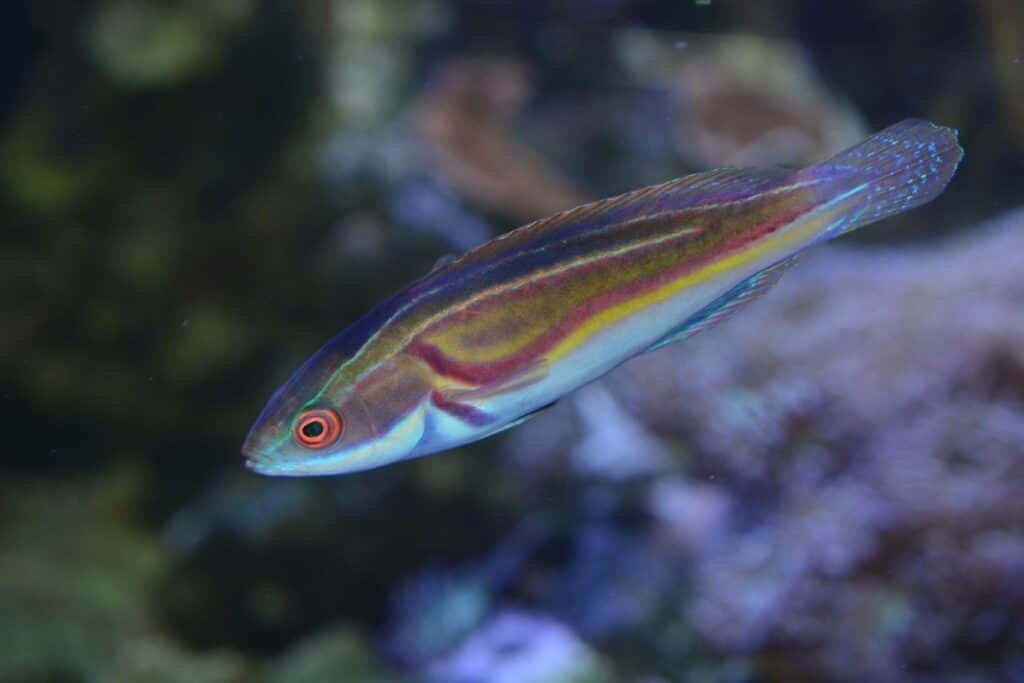
Labout’s fairy wrasse occurs in small groups on the outer reefs of the Great Barrier Reef and New Caledonia.
©Jokuyken15 / CC BY-SA 4.0, via Wikimedia Commons – License
These beautifully colored fish, the Labout’s fairy wrasse, are small fish that only reach between 3-6 inches long. These saltwater fish generally inhabit the Red Sea, Pacific, and Indian Oceans. Their body has six colorful stripes that really sets them apart from other fish.
The Labout’s fairy wrasse prefers to eat zooplankton and invertebrates. Due to their small stature, they are food for various animals in the ocean, such as tuna, sharks, and billiefish.
2. Lake Sturgeon (Acipenser fulvescens)
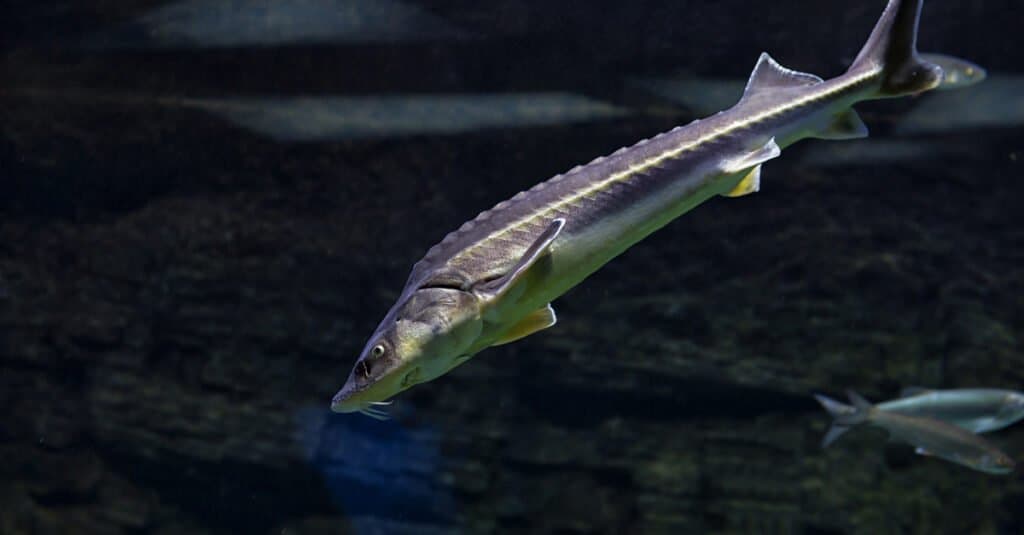
The lake
sturgeon
is also known as a living fossil.
©Galina Savina/Shutterstock.com
The lake sturgeon fish is a long-nosed, slender-bodied fish found in freshwater rivers and lakes. Their estimated population size is 30,000, most of which can be found in Lake Michigan.
These fish can grow over seven feet long. While long for a fish, it doesn’t hold a candle to the beluga sturgeon that can grow over 20 feet long and weigh over one ton (2,000 pounds)!
The lake sturgeon has a varied diet that consists of worms, insect larvae, leeches, mollusks, and amphipods. The biggest threat to their existence is pollution, over-harvesting, and climate change.
3. Lake Trout (Salvelinus namaycush)
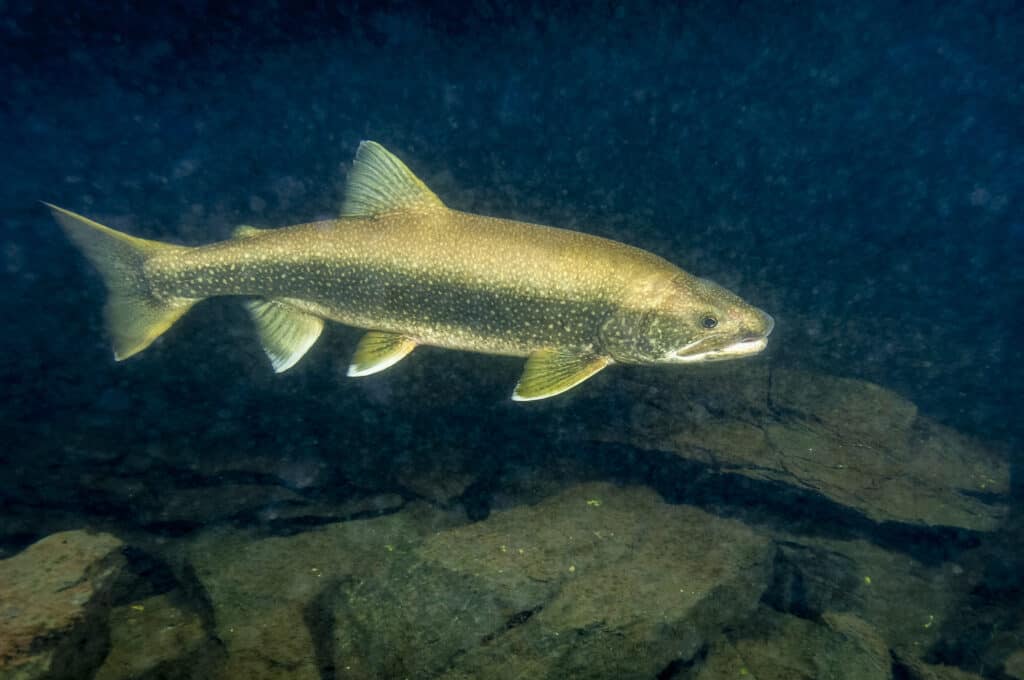
The lake trout has a lifespan of 20 years.
©iStock.com/LaSalle-Photo
This rather normal-looking fish, the lake trout, can weigh up to 100+ pounds and reach 50 inches in length. This fish’s deeply forked tail sets it apart. They reside in cold, oxygen-rich lakes.
They have a medium aggression level and prey on food such as plankton, insects, aquatic invertebrates, and other fish. These fish have an enormous population size of hundreds of millions. Their biggest threat to their livelihood is overfishing.
4. Lamprey (Petromyzontiformes)
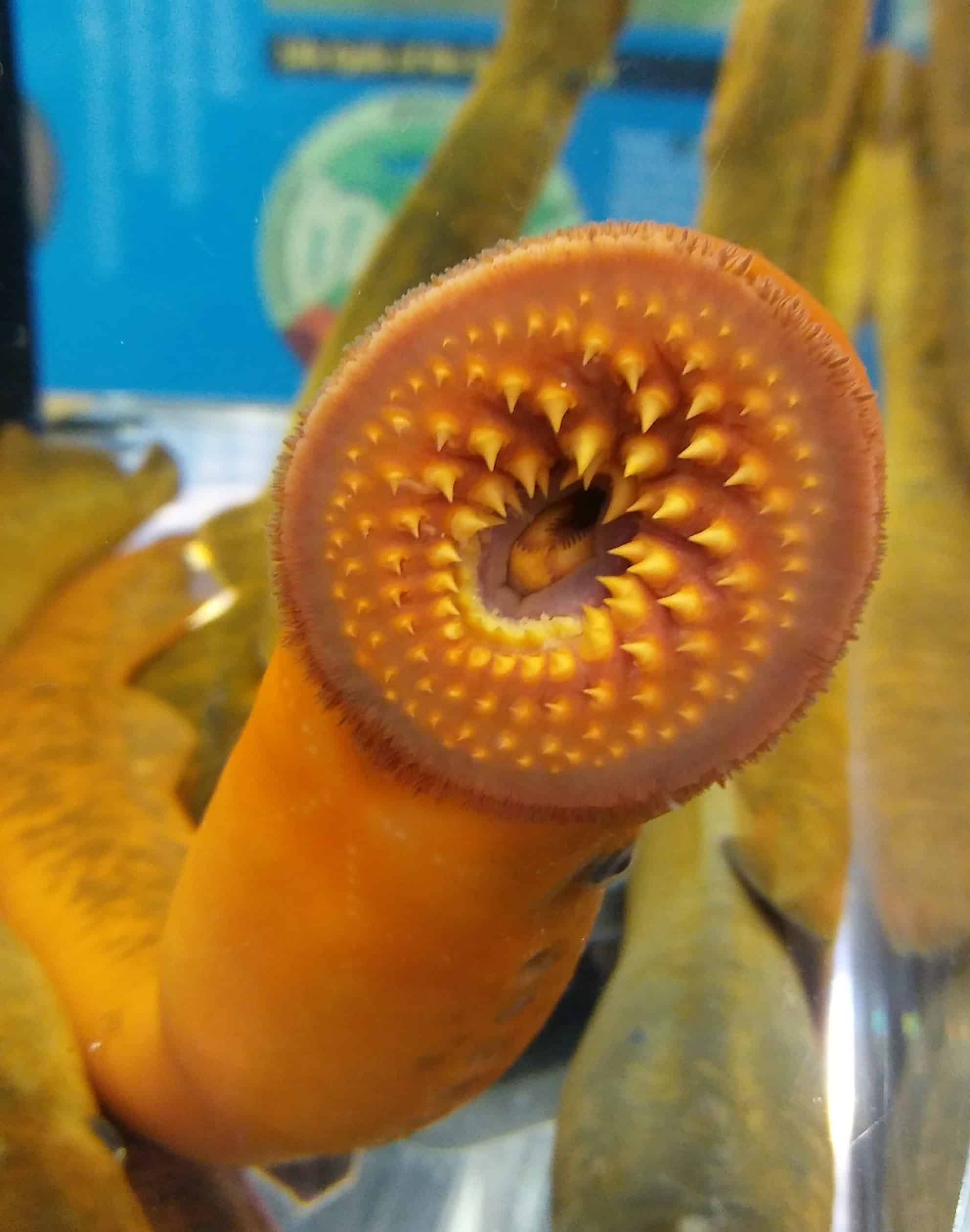
The lamprey can move up to 10.18 miles per hour.
©Theresa Grace/Shutterstock.com
This terrifying fish, the lamprey, may look normal on the outside, almost like an eel-looking fellow. However, once he opens his mouth, he looks like something that would make its way into a horror movie.
These fish have a six-year lifespan, weigh 5 pounds, and reach up to 24 inches in length. They prey on lake fish, and that is about it. The biggest threat to their population is the human use of population control methods.
5. Lancetfish (Alepisaurus ferox)
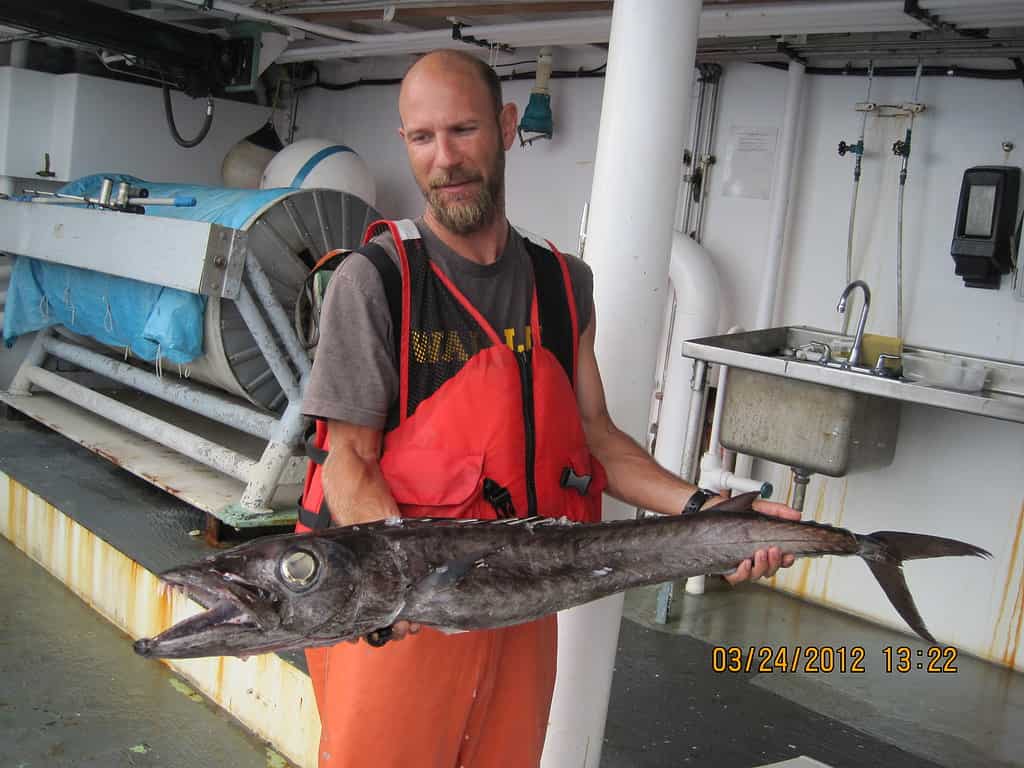
The lancetfish has smooth skin.
©NOAA Photo Library / CC BY 2.0 – License
The lancetfish’s teeth surely distinguish it, with two or three large fangs sticking out of its jaws. This makes their ability to prey on animals such as octopuses, squid, fish, and crustaceans quite easy.
These fish can reach lengths of seven feet and weigh anywhere from 3-20 pounds. These fish find themselves living far down at 6,500 feet below sea level. Their biggest threat is marine predators.
6. Largemouth Bass (M. salmoides)
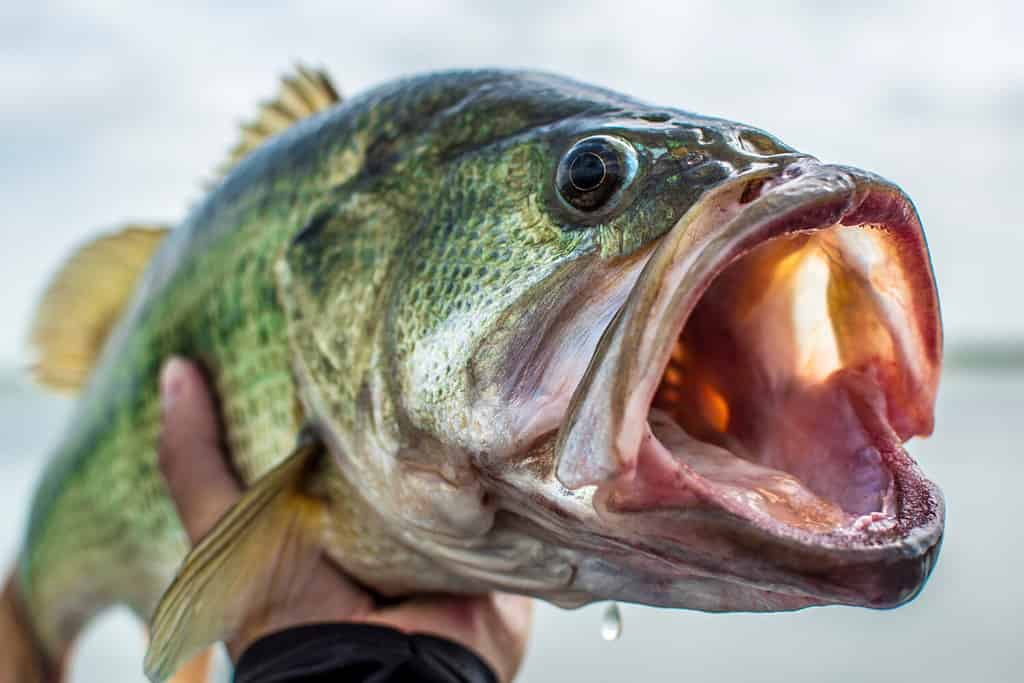
The largemouth bass can reach up to speeds of 11.8 miles per hour.
©Pierre Rebollar/Shutterstock.com
Whoever named the largemouth bass absolutely named it correctly. These bass have extremely large mouths, and they inhabit rivers, streams, lakes, and ponds. They have a mottled black stripe along the side that helps to differentiate them from other bass.
This Largemouth bass eats an extremely wide variety of foods such as small shrimp, bait fish, water fleas, insects, microscopic crustaceans, crustaceans, frogs, bats, worms, snakes, crawfish, younger offspring of larger fish, salamanders, small birds, mammals, and turtle and alligator hatchlings. The list can go on, but we wanted to show that the Largemouth bass will eat just about anything they can open their mouth to!
This fish, for all its voracious appetite, only weighs between 1-5 pounds and reaches 11-20 inches long. The greatest threat to their little existence is northern pike, crappie, walleye, yellow perch, kingfishers, bald eagles, and other large basses.
7. Lawnmower Blenny (Salarias fasciatus)
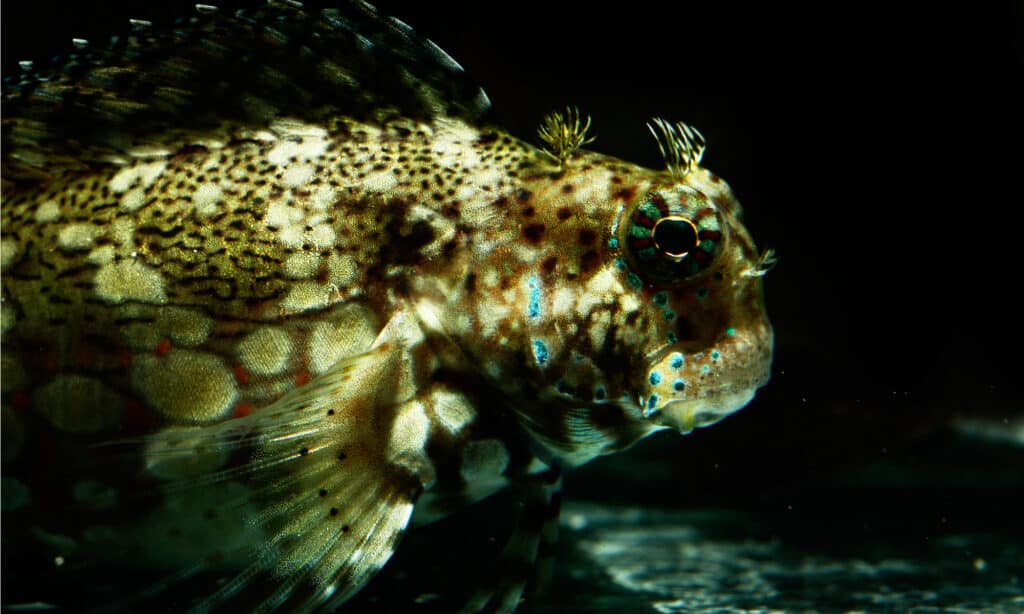
The weight of the lawnmower blenny is unknown.
©Pavaphon Supanantananont/Shutterstock.com
This odd-looking fish, the lawnmower blenny, comes in various colors, such as brown, red, blue, white, tan, and orange. While the lawnmower blenny is their most common name, they have many names, including jeweled rockskipper, algae benny, banded blenny, and barred blenny, to name a few.
These small fish reach up to 14 centimeters in length and only live about 2-5 years. These algae eaters need to be in temperatures of 78°F in order to breed.
The greatest threat to their population size is any fish bigger than them. Which, at 14 centimeters, is pretty much any other fish they encounter.
8. Lizardfish (Synodus lucioceps)
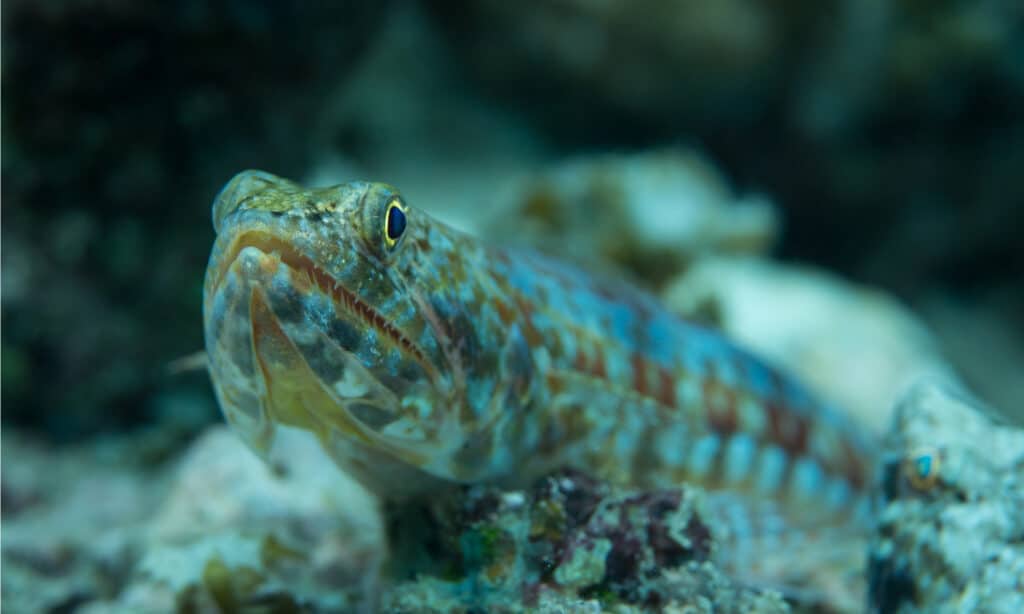
A lizardfish population resides in the Great Barrier Reef in Australia.
©fishmonger/Shutterstock.com
The lizardfish is a fun-looking fellow that you can find in Central America, North America, and South America. They weigh up to 15 pounds and are about 2-3 feet long.
This fish, known for its lizard-like head, has sharp teeth. His diet consists of fish, shrimp, and squid. These solitary creatures live anywhere from 7-9 years. Overfishing is the greatest threat to their population.
9. Leptocephalus (Leptocephalus brevirostris)
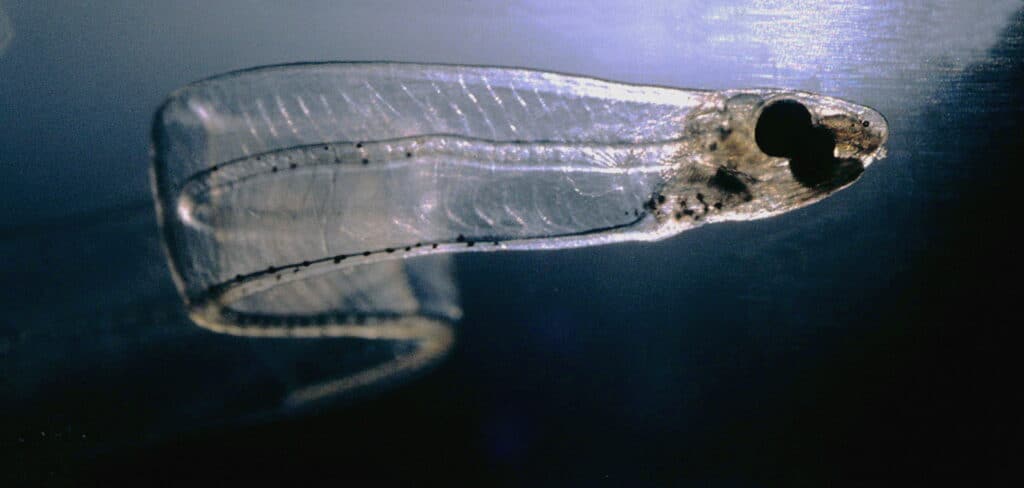
The leptocephalus gut is a simple tube, and they lack pelvic fins.
©Kils / CC BY-SA 3.0 – License
Leptocephalus fish have thin, flat, see-through bodies with a jelly-like substance, which a thin layer of muscle coats. These omnivores like to eat aquatic insects, crustaceans, and other fish.
These fish live in oceans worldwide, and the predators who threaten their existence are tuna, lancetfish, dolphin fish, rainbow runner, skipjack, and yellowfins.
10. Longnose Gar (Lepisosteus osseus)
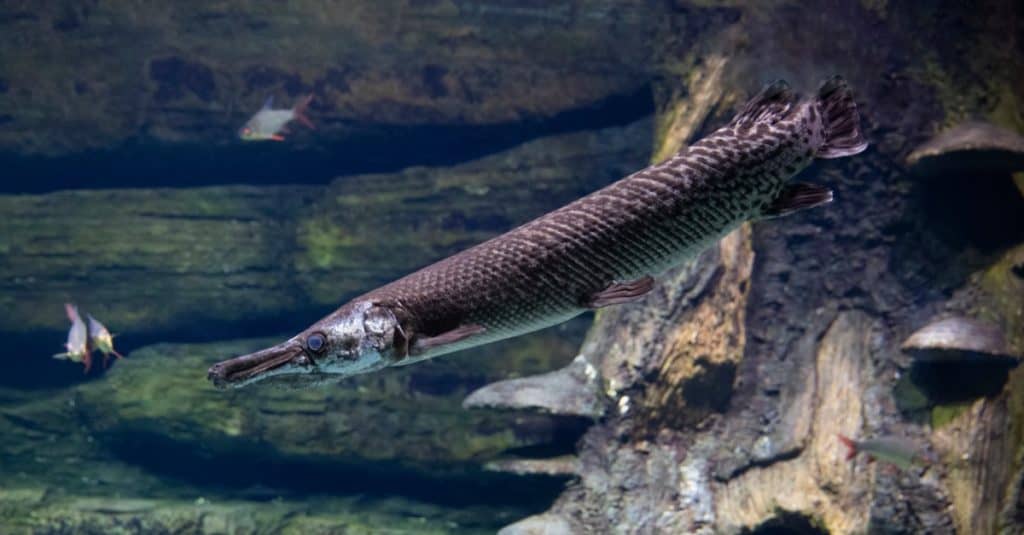
The typical size for the longnose gar is four feet but they can reach 6.5 feet in length.
©ivSky/Shutterstock.com
The longnose gar has rightly earned its name due to his slender and long nose. These carnivores prey on menhaden, sunfish, and perch. They can be found in fresh waters in Texas, Mexico, Florida, Michigan, and Wisconsin.
Longnose gar weigh up to 28 pounds and reach 6.5 feet in length. Their lifespan of 20 years is only interrupted by a variety of birds that prey on fish.
An interesting fact about these fish is that their species, the gar family, is roughly estimated to have been around for 100 million years.
The Largest Fish That Starts With the Letter “L”
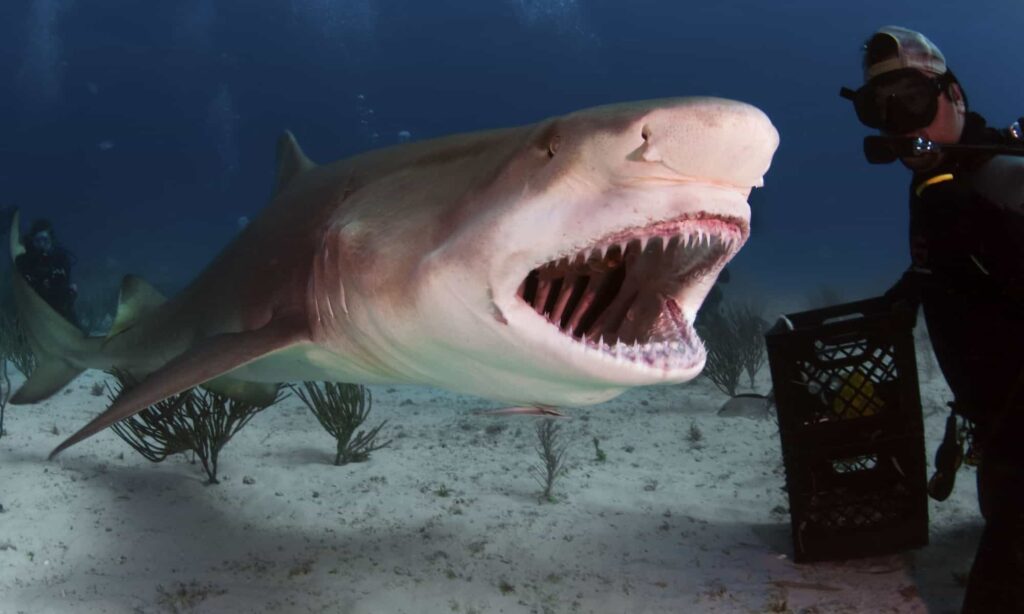
Lemon sharks can reach speeds of up to seven miles per hour.
©Greg Amptman/Shutterstock.com
In our in-depth research, the largest fish we came across that starts with the letter “L” is a shark listed among the top 30 biggest fish ever to be caught. The lemon shark, Negaprion genus, has a light yellow color to it and can be found in subtropical waters.
This behemoth can reach up to 10 feet long and weigh an astonishing 405 pounds! Although most lemon sharks will be around 220 pounds, the largest to be caught was 405 pounds, which is over double the size of regular lemon sharks!
Even though a shark, the lemon shark is a gentle and non-aggressive animal. He preys on small bony fish and crustaceans. Due to their large size, Lemon sharks have no known predators.
Complete List of 100+ Fish That Start With the Letter “L”
| Common Name (Fish that start with “L”) | Scientific Name |
|---|---|
| Lumpsucker | Cyclopteridae |
| Longfin Dragonfish | Tactostoma macropus |
| Longneck Eel | Derichthyidae |
| Loweye Catfish | Pimelodidae |
| Lungfish | Dipnoi |
| Light Fish | Phosichthyidae |
| Lionfish | Pterois |
| Long-Finned Pike | Dinolestes lewini |
| Largemouth Bass | Micropterus salmoides |
| Lake Trout | Salvelinus namaycush |
| Longfin Escolar | Scombrolabrax heterolepis |
| Leporinus | Leporinus |
| Long Band Rasbora | Rasbora einthovenii |
| Leeri Gourami | Trichopodus leerii |
| Loach Catfish | Amphiliidae |
| Lamprey | Petromyzontiformes |
| Longnose Chimaera | Harriotta raleighana |
| Longnose Dace | Rhinichthys cataractae |
| Longnose Whiptail Catfish | Sturisoma barbatum |
| Liver Catfish | Heteropneustes fossilis |
| Livebearer | Poeciliidae |
| Leaffish | Taenianotus triacanthus |
| Letourneaux’s Jewel Cichlid | Hemichromis letourneuxi |
| Loosejaw | Malacosteus niger |
| Long Finned African Tetra | Brycinus longipinnis |
| Lemon Cichlid | Neolamprologus leleupi |
| Le Conte’s Loach | Botia lecontei |
| Longjaw Mudsucker | Gillichthys mirabilis |
| Ling Cod | Ophiodon elongatus |
| Loach Minnow | Rhinichthys cobitis |
| Lake Whitefish | Coregonus clupeaformis |
| Lefteye Flounder | Bothidae |
| Labyrinth Fish | Anabantoidei |
| Licorice Gourami | Parosphromenus deissneri |
| Lenok | Brachymystax |
| Luderick | Girella tricuspidata |
| Lanternfish | Myctophidae |
| Lesser Bleeding Heart Tetra | Hyphessobrycon socolofi |
| Leopard Ctenopoma | Ctenopoma acutirostre |
| Linke’s Dwarf Cichlid | Apistogramma linkei |
| Lost River Sucker | Deltistes luxatus |
| Lemon Algae Eater | Gyrinocheilus aymonieri |
| Lifalili Jewel Cichlid | Hemichromis bimaculatus |
| Longnose Lancetfish | Alepisaurus ferox |
| Limia | Limia |
| Lemon Shark | Negaprion brevirostris |
| Ladyfish | Elops |
| Lake Chub | Couesius plumbeus |
| Loach | Cobitoidea |
| Longnose Sucker | Catostomus catostomus |
| Lancetfish | Alepisaurus |
| Leopold’s Angelfish | Pterophyllum leopoldi |
| Loach Goby | Rhyacichthys aspro |
| Longfin | Anguilla dieffenbachii |
| Lemon Tetra | Hyphessobrycon pulchripinnis |
| Lemon Fin Barb | Hypsibarbus wetmorei |
| Lined Sole | Achirus lineatus |
| Long-Whiskered Catfish | Sperata aor |
| Leptosoma Cichlid | Cyprichromis leptosoma |
| Longfin Smelt | Spirinchus thaleichthys |
| Lizardfish | Synodontidae |
| Lemon Sole | Microstomus kitt |
| Leatherjacket | Oligoplites saurus |
| Lampfish | Stenobrachius leucopsarus |
| Laulao Catfish | Brachyplatystoma vaillantii |
| Livingstoni | Nimbochromis livingstonii |
| Ling | Molva molva |
| Luminous Hake | Steindachneria argentea |
| Lionhead Cichlid | Steatocranus casuarius |
| Long-Finned Char | Salvethymus svetovidovi |
| Long-Finned Sand Diver | Limnichthys polyactis |
| Leleupi | Neolamprologus leleupi |
| Leopard Danio | Danio rerio |
| Louvar | Luvarus imperialis |
| Lace Catfish | Synodontis nigrita |
| Lake Tebera Rainbowfish | Melanotaenia herbertaxelrodi |
| Largemouth Buffalo | Ictiobus cyprinellus |
| Leaf Fish | Monocirrhus polyacanthus |
| Lemon Tetra | Hyphessobrycon pulchripinnis |
| Long-Nosed Loach | Acantopsis dialuzona |
| Longnose Gar | Lepisosteus osseus |
| Lace Gourami | Trichogaster leeri |
| Ladder Loach | Botia rostrata |
| Lake Chubsucker | Erimyzon sucetta |
| Lake Kutubu Rainbowfish | Melanotaenia lacustris |
| Lanceolate Whiptail Catfish | Rineloricaria lanceolata |
| Lapradei Nile Bichir | Polypterus bichir lapradei |
| Large-Scaled Barb | Acrossocheilus sumatranus |
| Laticeps Stingray | Potamotrygon laticeps |
| Laulao Catfish | Brachyplatystoma vaillanti |
| Leleupi | Neolamprologus leleupi |
| Leporinus | Leporinus fasciatus |
| Livingstoni | Nimbochromis livingstonii |
| Long-Band Rasbora | Rasbora einthovenii |
| Long-Finned African Tetra | Alestes longipinnis |
| Long-Finned Barb | Barbus arulius |
| Long-Finned Characin | Alestes chaperi |
| Lyretail Killifish | Cape Lopez Lyretail Killifish |
| Lyretail Lamprologus | Neolamprologus brichardi |
| Labout’s Fairy Wrasse | Cirrhilabrus laboutei |
| Lake Sturgeon | Acipenser fulvescens |
| Lake Trout | Salvelinus namaycush |
| Lancetfish | Alepisaurus ferox |
| Largemouth Bass | M. salmoides |
| Lawnmower Blenny | Salarias fasciatus |
| Leopard Shark | Triakis semifasciata |
| Leptocephalus | Leptocephalus brevirostris |
| Longnose Gar | Lepisosteus osseus |
The photo featured at the top of this post is © Aleksei Alekhin/Shutterstock.com
Thank you for reading! Have some feedback for us? Contact the AZ Animals editorial team.



